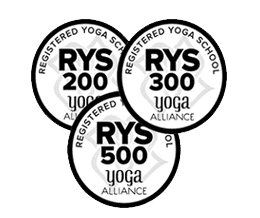Meditation Techniques Taught in Rishikesh Yoga Teacher Training
Rishikesh, often referred to as the “Yoga Capital of the World,” is not just known for its beautiful landscapes and serene surroundings but also for its deep-rooted tradition of yoga and meditation. Yoga teacher training programs in Rishikesh are renowned worldwide for their comprehensive curriculum, and one of the key components is meditation. In this blog post, we’ll explore some of the meditation techniques taught in Rishikesh Yoga Teacher Training that can transform your practice and teaching.
Understanding the Importance of Meditation During Yoga Teacher Training
Meditation, particularly when combined with practices like yoga, holds immense importance in daily life, contributing significantly to physical, mental, and spiritual well-being. Physically, meditation reduces stress, lowers blood pressure, and complements yoga postures by promoting relaxation. Mentally, it enhances concentration, fosters emotional balance, and cultivates a deeper sense of self-awareness. Spiritually, meditation is a gateway to self-realization, offering a profound connection with oneself and the universe. Rishikesh Yoga Teacher Training introduces students to various meditation techniques, making it a transformative journey of personal growth. It helps manage stress, improves relationships, and contributes to holistic well-being, ensuring individuals are not just physically fit but also mentally and emotionally resilient, leading to a fulfilling life.
1. Guided Mindfulness Meditation
Guided mindfulness meditation is a powerful technique in which a skilled instructor leads individuals through a sequence of mindfulness exercises. These exercises typically center around cultivating a heightened awareness of the present moment by emphasizing practices such as breath awareness, body scanning, and being fully present in the here and now. The benefits of guided mindfulness meditation are far-reaching and encompass various aspects of well-being. Firstly, it serves as a potent stress-reduction tool, helping individuals to manage and alleviate the pressures and anxieties of modern life. By grounding practitioners in the present moment, it fosters a sense of calm and tranquility.
Moreover, guided mindfulness meditation enhances concentration and mental clarity. By training the mind to focus on the immediate experience without judgment, it sharpens cognitive abilities and enhances one’s ability to concentrate, which can be immensely beneficial in daily life tasks and responsibilities. Furthermore, guided mindfulness meditation is an invaluable resource for personal growth. It enables individuals to gain a deeper understanding of their thoughts, emotions, and behaviors, ultimately leading to increased self-awareness and personal insight. This heightened self-awareness can be a catalyst for positive change and personal development.
Lastly, in the context of teaching yoga or any other form of wellness practice, guided mindfulness meditation is an essential skill. It equips instructors with the ability to guide their students in the journey of self-discovery and relaxation. By teaching these techniques, instructors empower their students to experience the profound benefits of mindfulness and create a harmonious mind-body connection.
2. Transcendental Meditation (TM)
Transcendental Meditation (TM) is a meditation technique renowned for its effectiveness in promoting mental and spiritual well-being. In TM, students are provided with a specific mantra, a word or sound, which they silently repeat during the practice. This mantra serves as a focal point, guiding individuals to transcend their ordinary thought processes and access deeper states of consciousness.
The benefits of Transcendental Meditation are both profound and diverse. First and foremost, it is a formidable stress-reduction tool. The repetitive chanting of the mantra helps individuals relax and release tension, promoting a profound sense of calm and serenity.
Additionally, TM has been associated with heightened creativity. By delving into deeper levels of consciousness, practitioners often find that their creative thinking is enhanced, enabling them to approach challenges and artistic pursuits with newfound inspiration and innovation. Moreover, Transcendental Meditation contributes to overall well-being. Regular practice can lead to improved mental clarity, increased focus, and heightened self-awareness. It is a holistic approach to self-improvement, promoting emotional balance and a deeper sense of inner peace.
3. Chakra Meditation
Chakra meditation is a holistic practice rooted in ancient wisdom, focused on aligning and balancing the body’s energy centers, known as chakras. These seven primary chakras, from the base of the spine to the crown of the head, play vital roles in physical, emotional, and mental well-being. Practitioners draw from techniques such as guided meditation, visualization, mantras, and the use of gemstones or essential oils to activate and harmonize these energy centers. The historical origins of chakra meditation can be traced back to ancient India, where it was documented in texts like the Vedas and Upanishads.
Each chakra corresponds to specific attributes, from stability at the root chakra to spiritual connection at the crown. By addressing these chakras individually or in sequence, practitioners can experience a range of benefits. These include emotional stability, enhanced vitality, deeper self-connection, stress reduction, improved communication, and spiritual growth. Chakra meditation fosters emotional resilience, physical vitality, and a profound connection with one’s inner self, making it a valuable tool for holistic well-being and personal growth.
4. Yoga Nidra
Yoga Nidra, often known as “yogic sleep,” is a meditation and relaxation practice that guides students through a structured process of deep relaxation and self-exploration. During a Yoga Nidra session, participants are led through various techniques to induce profound relaxation while maintaining a heightened state of awareness, akin to a state between wakefulness and sleep. This practice is celebrated for its numerous benefits, including reducing insomnia, alleviating stress-related issues, and facilitating deep relaxation and rejuvenation.
Benefits of Yoga Nidra
Yoga Nidra offers a wealth of advantages, making it a highly sought-after practice. It is particularly effective in addressing insomnia by promoting better sleep quality. Additionally, it serves as a potent stress-relief tool, helping individuals release tension and anxiety, leading to a sense of tranquility and mental clarity. Yoga Nidra also provides an opportunity for emotional healing by allowing practitioners to explore and release buried emotions and traumas. This practice contributes to physical well-being by reducing muscle tension and enhancing circulation, ultimately increasing energy and vitality. Moreover, it enhances focus, creativity, and can even serve as a pathway to spiritual experiences for some individuals. In essence, Yoga Nidra is a transformative practice with far-reaching benefits for both the body and mind.
Conclusion:
Meditation is not just a practice; it’s a transformative journey that can enhance both your personal yoga practice and your ability to teach yoga effectively. In Rishikesh Yoga Teacher Training, you’ll have the opportunity to learn and experience these meditation techniques under the guidance of experienced instructors who have mastered the art of meditation. Whether you’re a beginner or an experienced yogi, these techniques will deepen your understanding of yoga and meditation, making you a more skillful and compassionate yoga teacher training.
If you’re considering yoga teacher training in Rishikesh, the inclusion of meditation techniques like the ones mentioned above can be a game-changer in your yogic journey.
Stay tuned for more insights into the world of yoga and meditation as we continue to explore the transformative power of these ancient practices.




